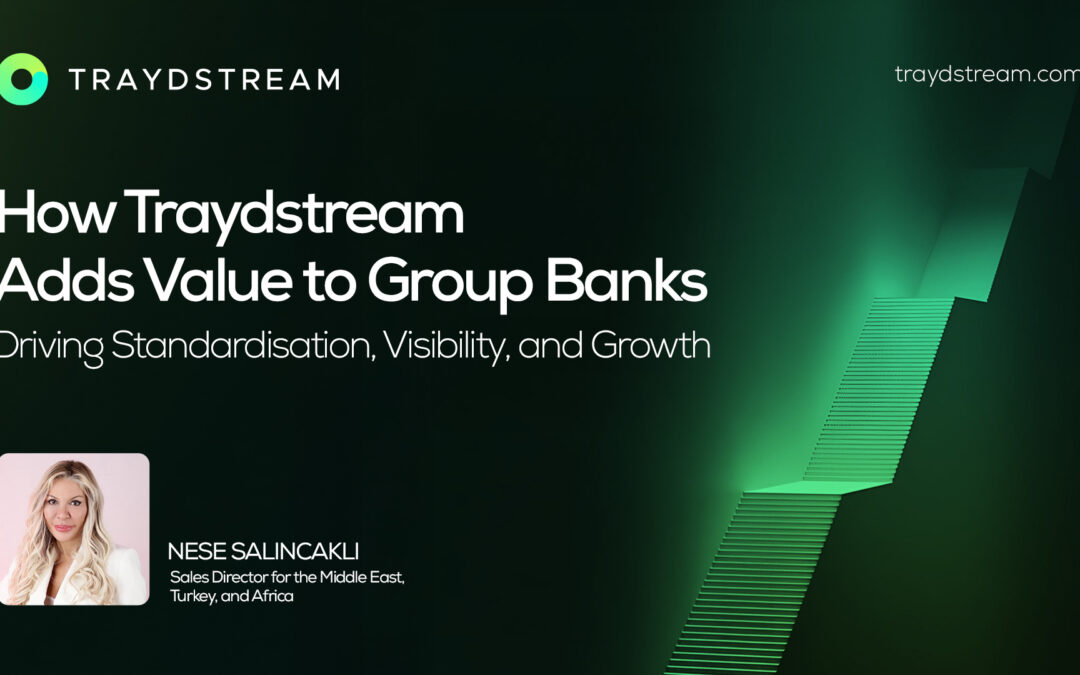 Sameer Sehgal, CEO of Traydstream
Sameer Sehgal, CEO of Traydstream
Forces reshaping the World of Trade
It is remarkable how ‘unchanged’ the world of Trade has remained over the last 100 years. The same documents, the same protocols between buyers and sellers, and the same Trade Letters of Credit and Documentary Collections, that form the bedrock of trade worldwide. While most of our daily lives today have gone digital – from ordering transport (Uber), to booking a holiday (AirBnB), watching movies (Netflix), and domestic purchases (Amazon), trade finance has unfortunately continued to wallow in paper. Not much has changed from my first day in trade banking in 90’s when all I did was stamp documents all day long. It’s high time that it changed for the better!
The last three decades in Trade
Trade Financing is a fundamental need for most corporates since it covers working capital – buying or selling. Not surprisingly as it has been around for centuries and today is quite commoditised, putting an enormous pressure on pricing in determining if a flow is won. But how does one price competitively, when every transaction needs manual review, is paper based, time & resource consuming. Logically, one would strive for economies of scale, however, without automation, that’s really challenging, since an increase in revenues requires a corresponding increase in operating headcount. What’s hidden right at the bottom of this cost pyramid is a thick layer of expenses that are misplaced to start with. These costs, linked to the processing of transactions, in the past had to be accepted with little choice. The only way to reduce costs was to benefit from labour arbitrage i.e. outsource operational processes to leverage low cost jurisdictions. In effect, the processes didn’t change, just the cost of those steps did. To make matters worse, it’s not only banks, but even corporates who find trade finance ‘painful’. Inflection events such as 2008 Financial crisis, the Middle East social unrests, or the current Covid led to disruptions that accentuate how broken the process is. In their wake, these events make liquidity dearer and processing a lot tougher.
What lies ahead?
The past cannot continue and with the technologies available today, processing, does not need to be frustratingly restrictive anymore. Let us review some of these exciting changes that are starting to deep root as trends and behaviours:
1. Online Processing. Trade has always been believed to be complex; hence rationalising the need for extensive manual intervention. That might potentially be true, however looking closer the proverbial 80/20 rule applies here as well. The run-of-the-mill transactions can today be checked on systems and platforms much better than in the physical world. On our Traydstream platform, with OCR, AI/ML and a whole raft of advanced technologies, we can run these transactions faster and more accurately than in the physical world. More so, systems remember and constantly evolve meaning that banks and corporates can process far more, far cheaper, in a more accurate and compliant manner, with lesser usage of working capital than ever before, in a standardised manner.
2. Suppliers & Buyers Connecting Online. This is already happening and with situations such as Covid 19, the need for such connectivity increases furthermore. Today, buyers place orders that go straight into the seller ERP, ‘through an Order to Cash process’ and into production – JIT. In the years ahead, what is likely to also to take place is the seamless information flow from these commercial processes onto bank systems such that the two processes overlap and synchronise, making for a much faster end to end process financing overlay.
3. Digital Documents. Erstwhile transactional trade banking has depended on paper. However, with the API tools available today, a safe, seamless and scalable manner of connecting systems is possible such that documents need not be ‘physical’, As examples, Bolero and Enigio provide a few excellent solutions in this space, and we have the UNCITRAL model framework as a backdrop to work from. It is not far when corporates and banks would be sharing a digital trade ‘digest’ with all documents to process.
4. Digital Processing. We’ve seen it during our lifetimes as paper-based payment methods have given way to online products thereby improving efficiency. Processing has become industrial and costs are a fraction of what they were a few decades ago. Trade is headed in that direction with online processing available today along with Logistics and Insurance.
5. Convergence of Logistics & Finance. This is a most exciting convergence that’s being catalysed by technology. So as logistical systems converge onto ERPs and banking/ trade / payment systems, booking of vessels could be online real time, while financing for thosetransactions would be real time as well. The same information of the cargo on the vessel as the goods made their way from the buyer to seller would be available to all parties to make intelligent decisions on financing and risk mitigation. In fact, technology would be smart enough to indicate the best logistical route and the most optimal financing solution available for the underlying transaction.
6. Convergence of Insurance and Finance. As Insurance gets digitised, buyers and sellers will have the ability to secure and bind their policies online and real time for all their business needs and hence be able to digitally share those policies with processors who could a) ratify the use of the policy and b) avail of the limits under the policy to process transaction, online and real time.
7. Audio and Video. We will see a far greater influence of Audio and Video tools interspersed in our lives. For example, when instructing on documentation or accepting discrepancies – it would be perfectly acceptable for voice responses to not only be recorded as proof, but also admissible in the courts as evidence. The same will be true of Video recording of conversations within the transaction digest as buyers, sellers and the other constituencies in the ecosystem would benefit from an online AV response embedded in the document file.
8. Block Chain. We are at very early stages of the evolution of Block chain or specifically the DLT technology. If there is one area where DLT should be most applicable it is Trade. One can see an inter-linked world where parties work of the same chain to add to and consummate a transaction end to end, with checking ‘processors’ in built at each stage to review and verify the transaction.
9. Ecosystems. We have already started to operate in ‘Ecosystems’ in our personal lives. When we book a hotel, we get directed to sites which offer transport means for our trips or vice versa. Adjacent offerings bundled together to make the experience of the user, easier and effective. It is now rapidly reshaping the B2B space as well. For example, as corporates use ERP’s – corporate contracting, banking, logistics, insurance, point of ‘purchase or sale’ financing are all coming together as an interlinked world.
10. Own Vs Use. One of the most fundamental changes we have seen in the last few years has been the shift to ‘own’ vs ‘use’. In our personal lives we seem to have made that leap, and that’s starting to emerge in the banking world as well. Why buy when one can use? Why spend on Capex, when managing through Opex is easier. Why bother with the upkeep of the entire infrastructure, when it can be done more effectively in a ‘pay as you go’ mode.
11. Interoperability. Systems being developed today are being built in an interoperable manner. It wont matter whether a transaction has been initiated on paper, on a block chain network, electronic bank front end system, SWIFT or any other mode. Systems will be flexible to operate between each other i.e. the ability to take on transactions and instructions in any medium and be able to auto convert, process and probably hand over to a completely different medium in the next step. The capability to be ‘megnostic’ (agnostic to the medium) – is going to be the true defining attribute of technology going forward.
Conclusion
These are all exciting trends that are impacting our world of trade and banking today. Rome was not built in a day, and so with these forces, they are steadily making their way into our banking lives. And as they do, our lives are getting changed – indelibly. The decision then rests with each one of us. As Socrates mused ‘The secret of change is to focus all your energies not to change the old but to create the new’. Isn’t then the best way to predict this amazing future of an online real time, invisible and interconnected trade world, to join hands in making it happen?


